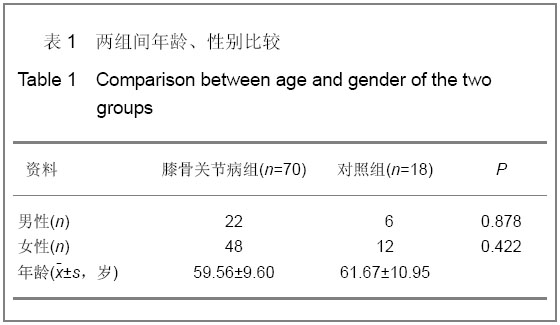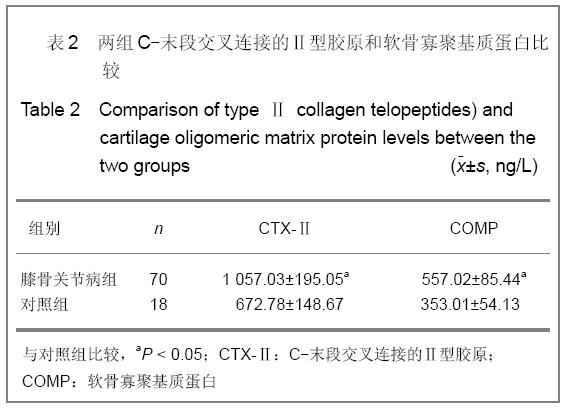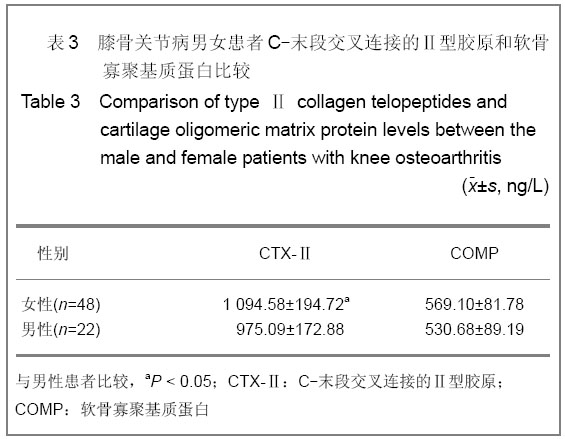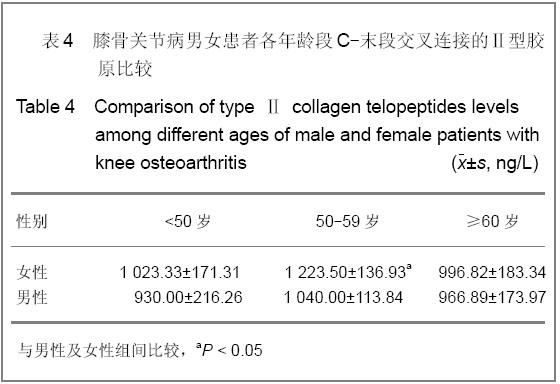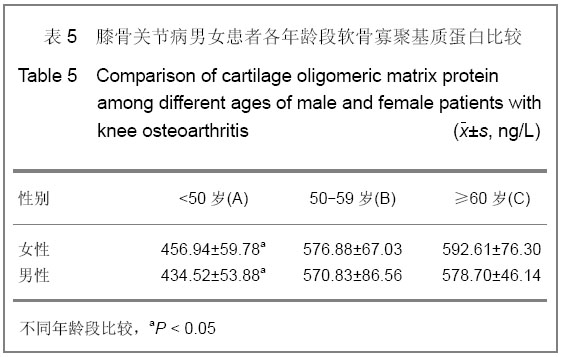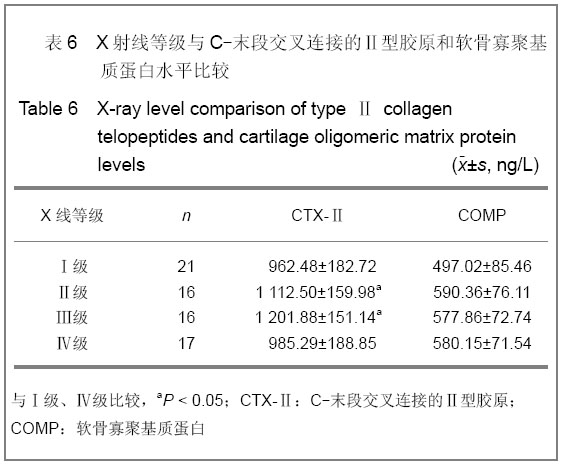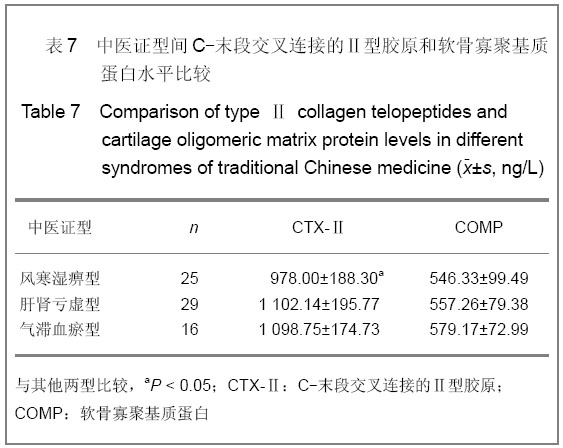中国组织工程研究 ›› 2013, Vol. 17 ›› Issue (2): 201-204.doi: 10.3969/j.issn.2095-4344.2013.02.003
• 骨组织构建 bone tissue construction • 上一篇 下一篇
原发性膝骨关节病中血清相关生物标志物的表达
刘 渊,孙雪莲,周红海
- 广西中医药大学,广西壮族自治区南宁市 530001
Serum biomarkers related to primary osteoarthritis
Liu Yuan, Sun Xue-lian, Zhou Hong-hai
- Guangxi University of Chinese Medicine, Nanning 530001, Guangxi Zhuang Autonomous Region, China
摘要:
背景:近年来随着分子生物学的不断发展,反映关节软骨早期退变等有关病理变化的实验室指标已是研究的热点问题。 目的:探讨C-末段交叉连接的Ⅱ型胶原和软骨寡聚基质蛋白在原发性膝骨关节病患者中的临床意义,寻求原发性膝骨关节病特征规律与C-末段交叉连接的Ⅱ型胶原和软骨寡聚基质蛋白的相关性。 方法:纳入膝骨关节病组患者70例,健康志愿者18例设为对照组,采用酶联免疫夹心法检测两组血清中C-末段交叉连接的Ⅱ型胶原和软骨寡聚基质蛋白的水平。 结果与结论:原发性膝骨关节病患者血清中C-末段交叉连接的Ⅱ型胶原和软骨寡聚基质蛋白均明显高于对照组,进一步深入研究发现在不同的性别、年龄及X射线的变化中均存在显著性差异,不同中医证型中风寒湿痹型患者C-末段交叉连接的Ⅱ型胶原明显低于肝肾亏虚型和气滞血瘀型患者,而软骨寡聚基质蛋白间比较差异无显著性意义。说明C-末段交叉连接的Ⅱ型胶原和软骨寡聚基质蛋白与膝骨关节炎的发生发展有着密切关系,两者联合应用能显著提高诊断的准确性,在膝骨关节炎的发病机制中具有重要的作用,与软骨的退变密切相关,并且可以反映病情、证型等变化。
中图分类号:
